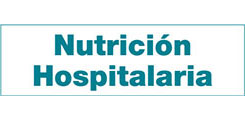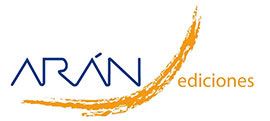Revisión
Análisis de composición corporal en tomografía computarizada mediante programas informáticos de segmentación gratuitos
Andrés Jiménez-Sánchez, Pedro Pablo García-Luna
 Número de descargas:
5103
Número de descargas:
5103
 Número de visitas:
861
Número de visitas:
861
 Citas:
0
Citas:
0
Compártelo:
La tomografía computarizada (TC) es una técnica directa y de referencia para el análisis de composición corporal con interesantes posibilidades en nutrición clínica. La segmentación es el proceso automático o semiautomático basado en programas informáticos por el cual se delimitan, separan y cuantifican los diferentes tejidos metabólicos de interés (muscular, adiposo subcutáneo, adiposo visceral y adiposo intermuscular) que forman parte de los diagnósticos actuales de desnutrición, sarcopenia y obesidad sarcopénica. El protocolo Alberta es la guía de segmentación más común y aplicable en la mayoría de los programas. En este trabajo revisamos las principales características de los programas de segmentación de código abierto más habituales, su grado de acuerdo y las limitaciones de este proceso.
Palabras Clave: Tomografía computarizada. Análisis de composición corporal. Software. Inteligencia artificial
DOI: 10.1016/j.ejca.2015.12.030
DOI: 10.1186/s13244-023-01402-z
DOI: 10.7717/peerj.3302
DOI: 10.3390/jcm10194340
DOI: 10.1016/j.clgc.2024.102199
DOI: 10.1148/ryai.230024
DOI: 10.1186/s12880-019-0316-6
DOI: 10.1016/j.avsg.2022.05.037
DOI: 10.1002/bco2.405
DOI: 10.1109/EMBC.2016.7591443
DOI: 10.1016/j.ejrad.2021.109834
DOI: 10.1002/jcsm.12158
DOI: 10.20945/2359-3997000000174
DOI: 10.1016/j.nut.2018.06.003
DOI: 10.1002/rco2.15
DOI: 10.1016/S1470-2045(08)70153-0
DOI: 10.1038/oby.2007.573
DOI: 10.3390/diagnostics14151696
DOI: 10.1038/s41430-018-0287-7
DOI: 10.1016/j.nutres.2012.12.007
DOI: 10.1016/j.clnesp.2024.07.1054
DOI: 10.1002/mp.16261
DOI: 10.1007/s00330-015-3794-0
DOI: 10.3390/nu16244312
Artículos Relacionados:
Trabajo Original: Measurement of body composition in cancer patients using CT planning scan at the third lumbar vertebra
Bianca Tabita Muresan , Carlos Sánchez Juan , Ana Artero , Ana Hernández Machancoses , Piedad Almendros-Blanco , Alegría Montoro , Joan Roselló Ferrando , Rafael Íñigo Valdenebro , Jaime Ríos Ríos , José M. Soriano , José Vicente Quirante Cascales , José López-Torrecilla
Trabajo Original: Diagnosis of pre-sarcopenia from a single selectional crosscut at C3 region, using CT scans before radiotherapy
Bianca Tabita Muresan , Carlos Sánchez Juan , Ana Artero , Ana Hernández Machancoses , Piedad Almendros-Blanco , Alegría Montoro , Gonzalo Sánchez Jordá , Cristian Marco-Alacid , Jaime Ríos Ríos , José M. Soriano , Laura Sánchez Guillén , José López-Torrecilla
Trabajo Original: Discriminatory power of indicators predictors of visceral adiposity evaluated by computed tomography in adults and elderly individuals
Trabajo Original: Dietopro.com: una nueva herramienta de gestión dietoterapéutica basada en la tecnología cloud computing
Trabajo Original: Impact of a high-fat diet containing canola or soybean oil on body development and bone; parameters in adult male rats
Carta Editor: Algoritmos de búsqueda e inteligencia artificial, una ayuda imprescindible en el desarrollo de revisiones sistematizadas
Marcela Caviedes-Olmos , Ángel Roco-Videla
Carta Editor: La inteligencia artificial y su implicación en el desarrollo de revisiones sistematizadas. Usos y limitaciones
Ángel Roco-Videla , Marcela Caviedes-Olmos , Raúl Aguilera-Eguía , Mariela Olguín-Barraza
Trabajo Original: Correlation of physical function and physical activity with muscle mass measured with computed tomography in adult hemodialysis patients
Geovana Martín-Alemañy , Monserrat Pérez-Navarro , Kenneth R. Wilund , Rosalba Hernández , Paul N. Bennett , Mariana Oseguera-Brizuela , Miguel Ángel Reyes Calderas , Rafael Valdez-Ortiz
Artículo Especial: Role of artificial intelligence in predicting disease-related malnutrition - A narrative review
Daniel de Luis , Juan José López Gómez , David Emilio Barajas Galindo , Cristina García García
Revisión: Inteligencia artificial generativa ChatGPT en nutrición clínica: avances y desafíos
Daniel de Luis
Revisión: Reto clínico 4. Y en el paciente crítico… ¿Puedo utilizar estrategias de inteligencia artificial para mejorar los resultados clínicos?
Joaquín Álvarez Rodríguez
Trabajo Original: Marcador albúmina-mioestatosis asistido por una herramienta de inteligencia artificial como factor pronóstico en pacientes con cáncer colorrectal metastásico
Daniel de Luis , David Primo , Olatz Izaola , Israel Sánchez Lite , Juan José López Gómez
Revisión: Desarrollo de un producto alimenticio. Alto rigor de la inteligencia artificial como herramienta de innovación
Rafael Urrialde
Trabajo Original: Evaluation of scientific validity and appropriateness of artificial intelligence-assisted ChatGPT advices in dietary treatment of methylmalonic acidemia
Furkan Yolcu , Merve Koç Yekedüz , Engin Köse , Fatima Gülhan Samur , Fatma Tuba Eminoğlu
Artículos más populares
Revisión: Inteligencia artificial generativa ChatGPT en nutrición clínica: avances y desafíos
ChatGPT y otras herramientas de inteligencia artif...
Revisión: Suplementación con micronutrientes y sus beneficios: ¿por qué y cuándo?
Introducción: los micronutrientes participan en la...
-
Licencia creative commons: Open Access bajo la licencia Creative Commons 4.0 CC BY-NC-SA
https://creativecommons.org/licenses/by-nc-sa/4.0/legalcode




